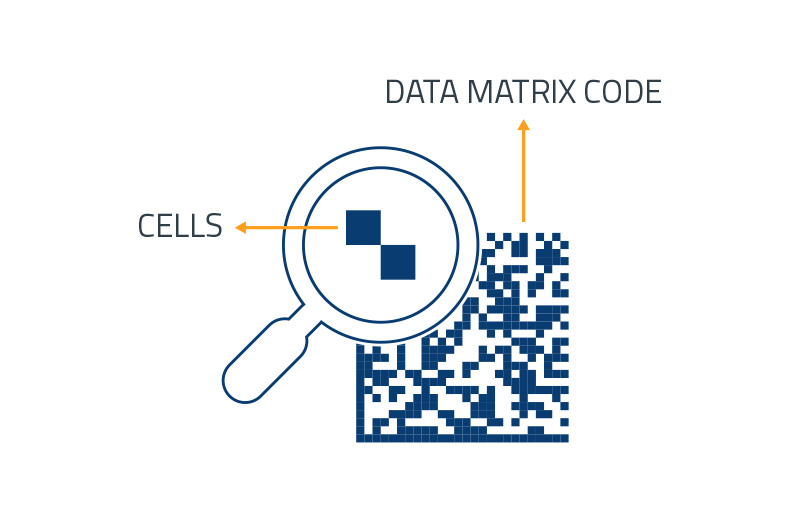HOW IS A DATAMATRIX CODE DIFFERENT FROM QR CODE?
Data Matrix codes can offer high density data in smaller sizes, which makes them best to be used on products that have a limited surface area to print on. Also, datamatrix codes have error correction capabilities, which unlike standard 1D barcodes, means that the data can still be read even if the code is partially removed or damaged.
While a Data Matrix code can encode the information in alphanumeric and numeric characters, a QR code can include Kanji and other multi-byte character sets and is ideal to be used with non-European languages.
WHY ARE DATA MATRIX CODES USED IN THE PHARMACEUTICAL INDUSTRY?
Because pharmaceutical unit packages and labels are commonly small, Data Matrix codes have become a great option for the pharmaceutical industry. Data Matrix codes are also the only 2D codes approved by GS1 for regulated healthcare items. Therefore, to become compliant with most track and trace regulations worldwide, datamatrix codes have become the norm. Check out the different regulations here.
Note: In the pharmaceutical industry, it is also usually recommended to have Human Readable Interpretation of the codes and their associated data. Typical conventions place the primary information, such as the Global Trade Item Number (GTIN), in the human readable data underneath the barcode.
DATA MATRIX GRADING
In order to maintain production performance, it is important that codes are easily read when they are scanned. And, to ensure codes can easily be read, their printing quality must be good. This is how the term ‘grading’ has been established in the market. Grading establishes the baseline quality of printed codes to increase the chances of successful barcode scans.
Barcode grading provides a score (number or letter) that quantifies the multiple barcode attributes against the different known standards. For most pharmaceutical markets, a ‘B grading’ is recommended and achieving this entails meeting a series of criteria, such as symbol contrast, modulation, fixed pattern damage, clock track regularity, axial non-uniformity, among others. Non-compliance with this parameter can, in more extreme cases, lead to the packaging being discarded.

